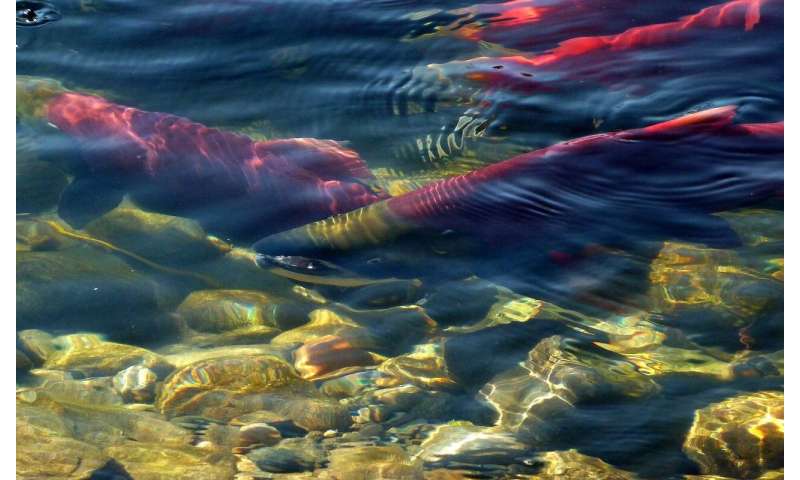
Credit: CC0 Public Domain
A Simon Fraser University-led research team has found significant evidence that human activity in estuaries is impacting juvenile Pacific and Atlantic salmon. The team's review of 167 peer-reviewed studies (from an initial search of 13,000) identified negative impacts from several stressors, including the effects of flood-protecting tidal gates, pollution and habitat modification.
Their results were published today in Global Change Biology.
Emma Hodgson, an SFU postdoctoral researcher at the time of the research and lead author on the paper, says the review is the first to synthesize what is known, and not known, about how human activities in estuaries may impact juvenile salmon.
"Risk can be defined by the severity of the impact and the certainty we have about whether that impact is likely—that certainty is based on the amount of evidence and agreement between the evidence," Hodgson says.
The review summarized more than 1,300 statistical tests related to the biological impacts from 14 stressors to determine the environmental impacts of human activities.
The review also identified such stressors as light and noise pollution, which have potentially severe negative impacts on salmon, but which have been poorly studied.
SFU professor Jonathan Moore, co-author on the paper, hopes this review will help guide stakeholders and decision-makers in being effective stewards of juvenile salmon and their estuarine habitats.
"Natural resource managers need to make tough decisions, in short timeframes, about the potential environmental risks of proposed developments and whether they should go ahead," says Moore. "They won't have time to wade through thousands of papers when making these decisions, so we did it for them."
One stressor the review identified as likely to have a negative impact on salmon populations, is a reduction in connectivity from the presence of tide gates. These metal gates are designed to reduce flood risks, but can also cut off access for salmon to parts of a river.
For example, in one study reviewed, the number of juvenile salmon found above tide gates was 2.5 times lower than in free-flowing rivers.
Aaron Hill, executive director of Watershed Watch Salmon Society, says the review reveals the importance of conservation planning and restoration in estuaries for the long-term benefit of salmon.
"Estuaries are critical nursery habitats for juvenile salmon and this study showcases the ways in which human activities can cause real harm," says Hill.
He says this review also validates calls by First Nations, local governments and conservation groups to mitigate this harm through changes to infrastructure and land use management.
"For example, tide gates and other flood control structures can be upgraded to restore access for young salmon to these important estuarine habitats."
More information:
Emma E. Hodgson et al, Changing estuaries and impacts on juvenile salmon: A systematic review, Global Change Biology (2020). DOI: 10.1111/gcb.14997
Citation:
Study reveals hidden risks of estuary development for young salmon (2020, February 21)
retrieved 23 February 2020
from https://phys.org/news/2020-02-reveals-hidden-estuary-young-salmon.html
This document is subject to copyright. Apart from any fair dealing for the purpose of private study or research, no
part may be reproduced without the written permission. The content is provided for information purposes only.
#Biology | https://sciencespies.com/biology/study-reveals-hidden-risks-of-estuary-development-for-young-salmon/
No comments:
Post a Comment